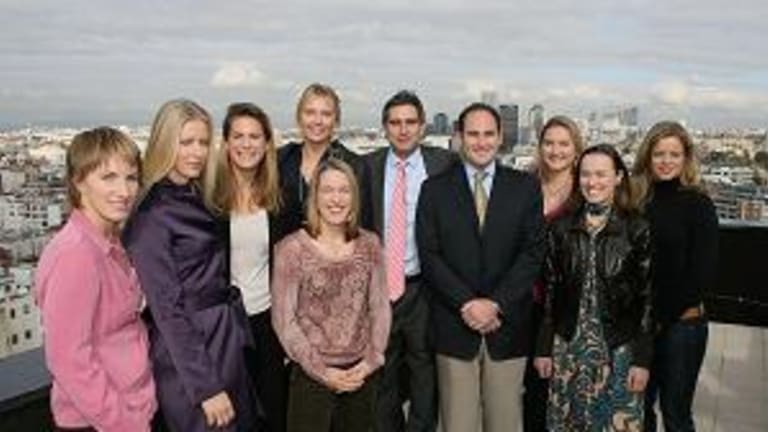This wasn't merely because American players were, numerically, the reigning force. It was also a tradition that dated back to the formative years of the pro tour, out of which sprouted the Virginia Slims tour and its flagship VS Championships - a tournament that truly deserved the oft-applied, seldom-realized handle, "fifth Grand Slam." That event was played in the glory years of the 1970s and 80s, in Madison Square Garden in the winter. It drew sellout crowds and hordes of international media.
I can still feel the restless buzz of the crowd that braved the frigid nights to assemble under those theatrically bright lights. I can still smell the aroma of the hot dogs wafting from the The Garden's concessions.
The problem for the WTA Tour in recent years has not been the Staples Center. It appears that the WTA has been mired down in some version of Staples Center Syndrome ever since the VS tour dissolved, at which time the tour set out down the long, bleak road that ended last year at the black hole of the Staples Center. The first stop was the Chase Championships, which only managed to make a go of it in New York for one feeble year.Then Sanex took over title sponsorship - gee, remember that outfit, the putative long-term savior of women's tennis? Sanex sponsored the tour for a year and hosted a desultory season-ending event in Munich, Germany, near the body-care giant's home base of Switzerland. Then it pulled the plug, Steffi or no Steffi.
The striking thing about Sanex back then was that it had no product for sale in the U.S. Never mind, the Sanex folks said, the women are going to do wonders for our European markets, and soften up the U.S. market for our ultimate penetration efforts. Europe, Sanex said, is ready for stand-alone women's tennis of the highest order. Oh, well, so much for the best laid plans of mice and marketing men. I can't speak for our European friends, but American women and men still seem to be getting on nicely without Sanex's latest eucalyptus-and-tsetse-fly sperm cleansing emulsion.
When Sanex pulled out, sick to death of the job after a mere year of posturing as The Answer for women's tennis, it seemed to dawn on the deep thinkers of the WTA that the relationship with Virginia Slims had been sui generis. And the WTA came to understand that VS was in some ways an albatross, albeit a gaudy, gold-and-jewel encrusted one. After all, in its glory years, VS had operated as a tour-within-the-tour - a fabulously successful indoor circuit-within-the-circuit, with its very own, epic and comprehensively supported championships. Another way to put this is that tennis did not sell VS as much as VS sold tennis and thus, presumably, cigarettes.
But the WTA was following good instincts at around the time that VS, under increasing fire as a "merchant of death", began pulling up stakes. The organization recognized the need for a sensible season culminating with a year-end championships. Why that plan collapsed, wasting all the media and fan capital accrued during the VS years, is still a mystery to me. But the upshot was a year-end championships that has rarely gained traction in the drive to be recognized as a major event.
The Staples Center expirement proved one thing: the women couldn't even go to the second-largest media market in the U.S. with their championships and generate even a tremor on the Richter scale of public interest in the game. Los Angeles is, after all, as close as you can get to the traditional Ground Zero of modern American tennis. Heck, you can probably see the Staples Center from Pete Sampras, Tracy Austin, or Jack Kramer's picture window. It certainly didn't help when the game's stars proved either unable or unwilling last year to support the premiere event of their official, governing body.But that wasn't the root cause.


